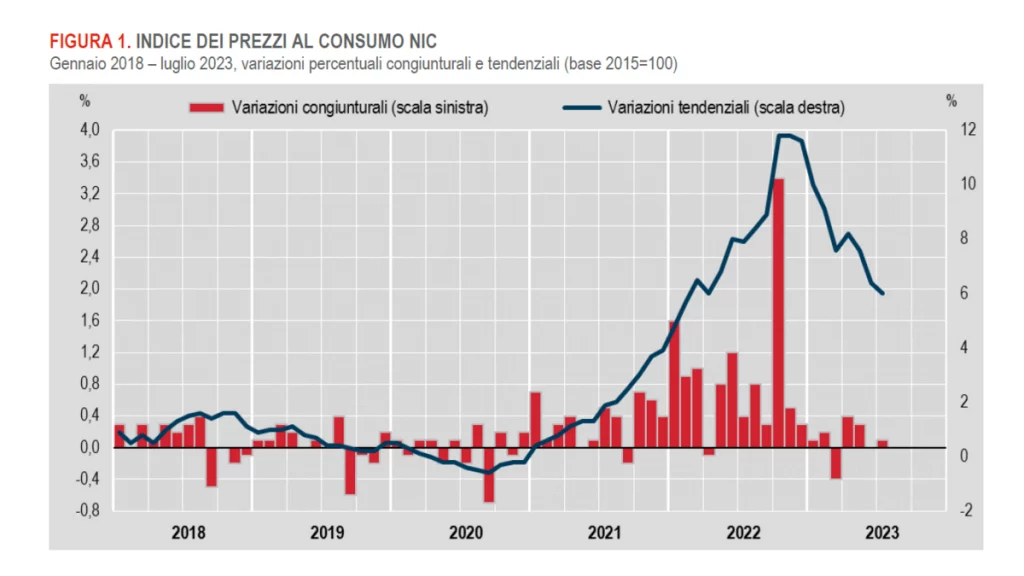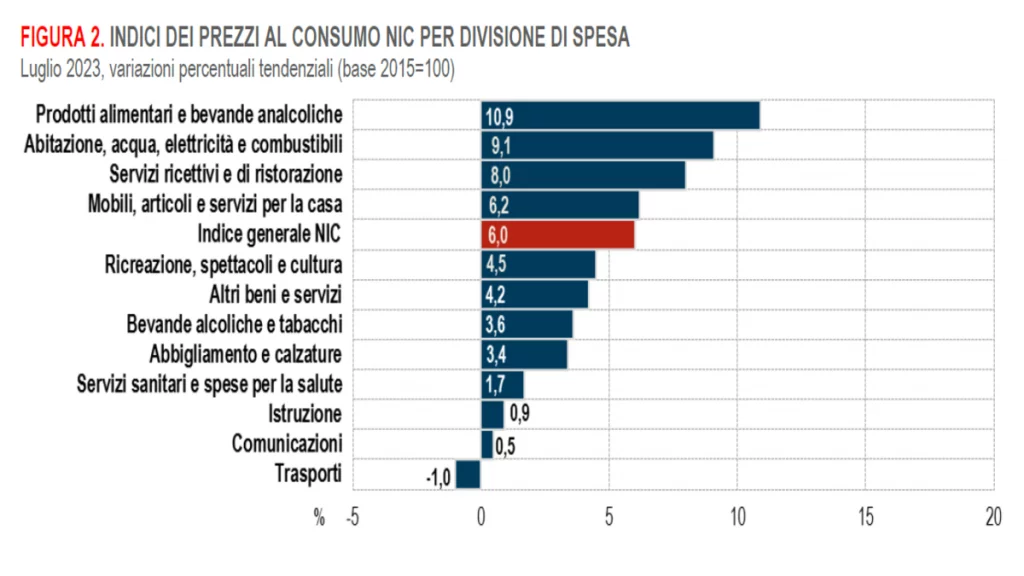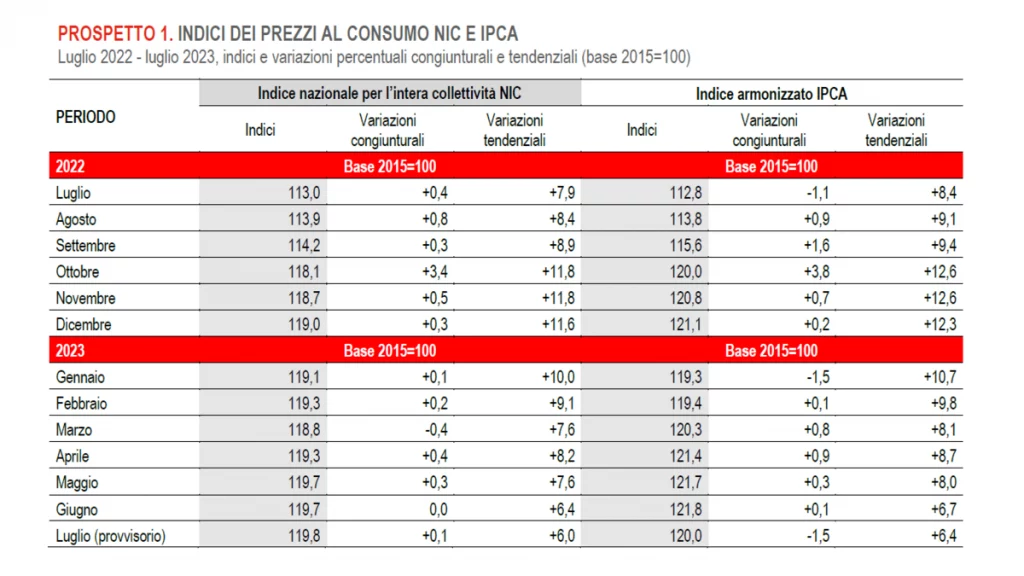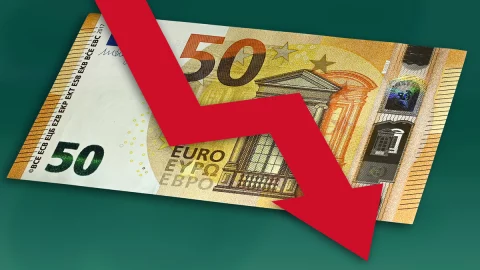In July, theinflation continues to decline, stopping at 6% compared to 6,4% in June and returning to the level recorded in April 2022. This slowdown is due both to the decline in the growth of commodity prices (+7,5% to +7,1%) and services (+4,5% to +4,1%). The differential between services and goods inflation remains stable at -3,0 percentage points.
The national consumer price index for the whole community (NIC), excluding tobacco, however, recorded an increase of 0,1% compared to the previous month.
communicates it theIstat spreading the preliminary estimate on consumer prices.
“The dynamics of inflation, still strongly influenced by the evolution of the prices of energy goods, also reflects the slowdown on a trend basis in the prices of processed food products and services. In addition, core inflation slowed down, reaching +5,2% in July. Lastly, for the fifth consecutive month, the tendential dynamics of the "shopping cart", which fell to +10,4% in July" comments Istat.

THEacquired inflation for 2023 it is +5,7% for the general index and +5,1% for the core component. You see the trend of the last few months which show a slowdown in the price increase. In general, inflation dynamics are still strongly influenced by the trend in the prices of energy goods, but also reflect the year-on-year slowdown in the prices of processed food products and services.
The prices of energy goods are slowing down
The slowdown in commodity prices is mainly influenced by the prices of energy goods, which recorded a change on an annual basis of +0,7% compared to +2,1% in June (with a cyclical decrease of -1,4%). This decrease is mainly attributed to the unregulated component, which decreased from 8,4% to 7,0% (-1,3% compared to the previous month). In the regulated sector, the decrease on an annual basis in prices was accentuated, falling from -29,0% to -30,2% (-1,5% compared to June).
La deceleration of inflation is also due to price slowdown of the Services relating to transport (from +4,7% to +2,4%), of Processed food (from +11,5% to +10,9%), of Other assets (from +4,8% to +4,6%), of Various services (from +2,9% to +2,7%) and of tobaccoi (from +2,5% to +1,9%). Even if these effects were only partially offset by the increase in the prices of unprocessed food (from +9,4% to +10,4%) and of services related to housing (from +3,5% to +3,6 .XNUMX%).

Core inflation falls
THEunderlying inflation, excluding energy and fresh food, keep slowing down (going from 5,6% to 5,2%), as well as the one that excludes only energy goods (going down from 5,8% recorded in June to 5,6%). Also the cThe annual rise in the prices of goods and services has eased (from 7,5% to 7,1% and from 4,5% to 4,1% respectively), keeping the inflation differential between services and goods at -3,0 percentage points.
I prices of food goods, home and personal care slowed down slightly on an annual basis (from 10,5% to 10,4%), as did those of frequently purchased products (from 5,7% to 5,6%).
The cyclical increase in the general index is mainly due to the increase in the prices of processed food (0,9%), recreational, cultural and personal care services, and transport-related services (0,4% both ), non-durable goods and miscellaneous services (both 0,3%). These effects were partly offset by the drop in energy prices, both regulated (-1,5%) and unregulated (-1,3%), unprocessed food (-0,8%) and tobacco (-0,6%).
According to preliminary estimates, the harmonized index of consumer prices (HICP) recorded a decrease of 1,5% on a monthly basis, due to the summer sales not considered in the NIC index, and an increase of 6,4% on an annual basis, decelerating compared to 6,7% in June.

Inflation also down in the Eurozone
Inflation continues slow down also in the Eurozone. According to the first flash estimate of Eurostat, is forecast at 5,3% in July, down from the 5,5% recorded in June. Analyzing the main components, it is expected that the sectors of thegroceries, alcohol and tobacco will record the higher annual rate in July (10,8%, compared to 11,6% in June), followed by services (5,6%, compared to 5,4% in June), non-energy industrial goods (5,0%, compared to 5,5% in June) and energy (-6,1%, compared to -5,6% in June).
Positive scholarships, Milan the best
European stock markets improve thanks to positive data from GDP and inflation. After a shaky start, most Eurozone indices move into positive territory. In particular, Milan stands out gaining 0,5%. The euro also shows growth, with an exchange rate of 1,1032 against the dollar.





